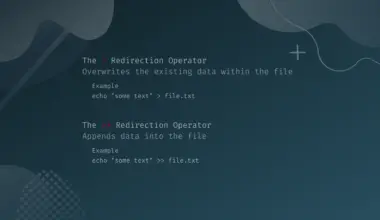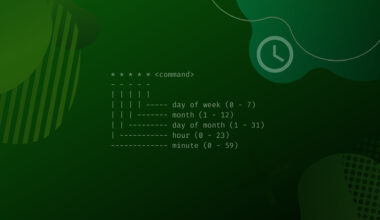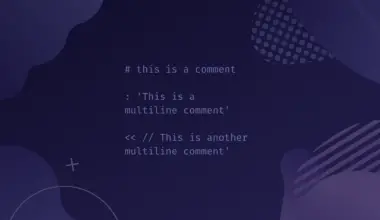Rocky Linux is a Linux distribution that is a 100% compatible rebuild of Red Hat Enterprise Linux (RHEL). Rocky Linux is maintained by the Rocky Linux Foundation.
Rocky Linux is now very popular both with individuals and large organizations and considered an unofficial successor of CentOS Linux.
In this article, we’ll try to give you an overview of Rocky Linux and what you need to know about it.
Table of Contents
Why Rocky Linux Was Created

In September 2019, RedHat announced CentOS Stream, an upstream development platform designed for CentOS. In December 8, 2020, CentOS and RedHat announced the end-of-life (EOL) for CentOS Linux and they also said others to shift focus to the CentOS Stream project.
This shift, from a stable operating system to a rolling release stream, left many organizations without a Linux distribution that fulfils their needs.
In response, original founder of CentOS, Gregory Kurtzer, announced via a comment on the announcement blog post on CentOS website that he would again start a project to achieve the original goals of CentOS. Later he said in press release, “In response to this unexpected shift, I am proud to announce the launch of a new project, Rocky Linux, in honor of my late CentOS co-founder Rocky McGough“.
Initially it was a GitHub Project, but gradually it is being enriched by lots of open source contributor and developers and by December, the repository of Rocky Linux had become one of the top-trending repositories on GitHub.
As CentOS Stream can’t be a replacement of CentOS and there is in need of Linux based operating stable system like CentOS, many new distros have been released.
Of them, Rocky Linux is among the highest trending and provides almost same features and stability as RHEL provides.
History of Rocky Linux
On April 30, 2021, the first release of Rocky Linux was officially released. The second release of version 8.4, the last before the stable release, was released on June 4, 2021. On June 21, 2021, the stable release of Rocky Linux 8.4 was released, with the code name “Green Obsidian“. Currently on May 16, 2022, Rocky Linux 8.6 is released.
As Rocky Linux is a downstream rebuild of RHEL 8 and aligns with the RHEL 8 life cycle, Rocky Linux 8’s planned EOL is May 31, 2029.
Features and Why Use Rocky Linux
The main attraction Rocky has drawn is that it is founded and created by one of the co-founders of CentOS. He is the pioneer for the popularity of CentOS, and he knows exactly what the market wants now after what happened with CentOS and CentOS stream.
With many previous developer of CentOS along with open source contributor, everyone thinks and believes that they can really provide a good product worthy of carrying CentOS’s baton.
Likely so, Rocky is providing the stability as of CentOS. As of downstream of RHEL, it tracks and follows the stable release of RHEL and provides binary compatibility of RHEL.
The migration from other Linux distros like CentOS are relatively easy as Rocky provides migration tools and scripts.
Another thing is the lesson that we all have learned from the whole CentOS and RedHat scenario. So now Rocky has promised to stay always an open source Linux distribution. The Rocky Linux project has spent a lot of time deciding and formalizing its internal structure, governance, policy, clauses etc.
As of RESF, the Rocky Linux FAQ says “Rocky Linux will never be controlled, purchased, or otherwise influenced by a single entity or organization“.
For now, Rocky Linux has gained immense buzz and the community is supporting them a lot. I think the future is amazingly bright for Rocky as many companies are adopting to Rocky now.
The features, performance, stability all of them are almost same as of RHEL as it is based on RHEL’s stable source code.
If you are dependent on CentOS and don’t want to pay for RHEL, you could easily consider Rocky Linux as a replacement of CentOS and can migrate from CentOS to Rocky Linux.
Just keep in mind that they are relatively a new OS in market, so it will take time to reach the height of CentOS.
The installation is similar to CentOS/RHEL and pretty much every other Linux installation program. ISO images are available for both x86-64 and ARM, and for each architecture, there are “Minimal“, “DVD“, and “Boot” options with “torrent” and “checksum”. The minimal of 8.6 is about 2.11 GB.

After proper installation and logging, you will get a familiar GNOME desktop screen as of RHEL as shown above. For being an exact copy of RHEL, you will get all the flavors RHEL provides.
Rocky Linux Support
There are different types of support for Rocky Linux.
Official support is offered by CIQ, a company founded and owned by Mr. Kurtzer.
Community support is also available from people who are intimately involved with Rocky Linux, but the RESF has stated that anybody can provide support for Rocky Linux.
Moreover, as Google Cloud is a major sponsor of Rocky Linux, their customers can leverage Google’s support to get help for Rocky Linux. CIQ experts and Google Cloud’s support teams unite to address issues and provide enterprise-grade support regarding Rocky Linux.
Conclusion
In this article, we’ve just shared necessary information related to Rocky Linux. Different people have different opinion about which distro to prefer, in context of server or workstation.
Companies and users who rely on a reliable, user-friendly, and a free Linux version, can easily give it a try. If you have any feedback or anything to add please feel free to leave a comment.






